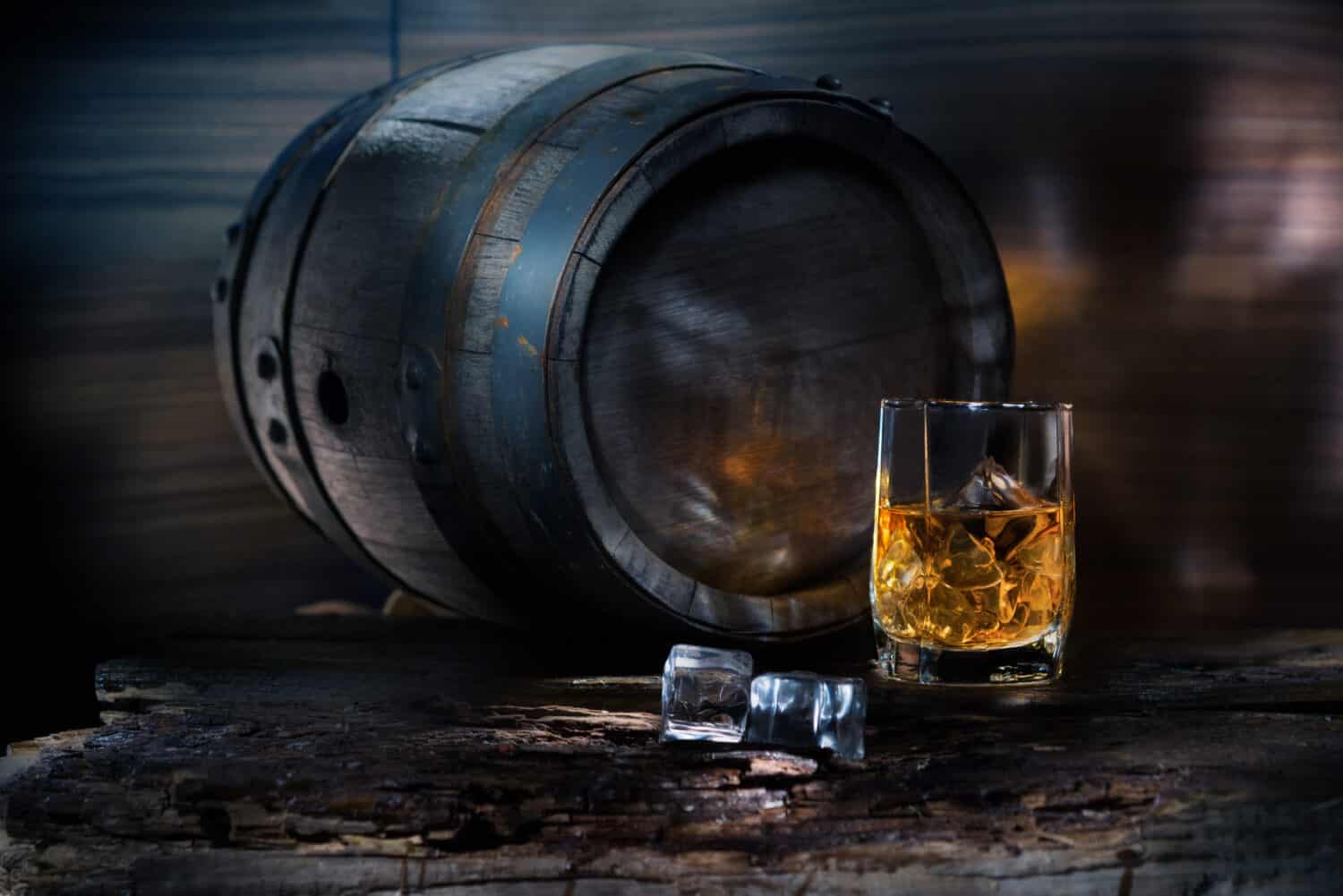If whiskey were a person, it would be a sophisticated, deep-thinker who airs confidence and participates in intellectual debates. At least, this picture flashes before you anytime you see someone drinking whiskey on a television show or movie. Many characteristics set whiskey apart as a classy drink. Numerous drinks often group together because they have similar ingredients and processing methods. Among those drinks are whiskey and bourbon. Whiskey is an all-encompassing term for a few different types of drinks, including bourbon. However, what exactly is the difference between whiskey and bourbon?
In this article, I will touch on several differences; these include what each consists of, processing methods, and the different tastes each one has.
Any Whiskey Comes From Fermented Grain Mash
Whiskey is an alcoholic beverage distilled to at least 40 percent ABV. It is also primarily three different ingredients. These are a type of fermented grain mash, water, and yeast. If you are wondering what a fermented grain mash is, it is a type of grain, or a combination of grains, mashed into flour.
Whiskey can legally be different types of grain mash, and the type of mash will determine the type of whiskey.
The processing of going from grain mash to whiskey is very complex. First, the grains go through a milling process, turning them into flour. Afterward, flour and hot water are placed in a large mash tun tank. The mash tun can be either wood or metal. While cooking in the mash tun, the starch is converted to sugar. From there, the sugar is added to a fermentation tank called a washback with yeast.
This is where the true magic happens. The yeast turns the sugar into alcohol. Of course, the alcohol must be distilled a couple of times to reach a higher ABV, usually around 60 to 70 percent.
Then before bottling, water is added to the whiskey to dilute and bring the ABV down to at least 40 percent. This complicated and intricate process produces one of the most popular spirits enjoyed by many.
Whiskey is a Worldwide Production
The biggest producer of whiskey is Scotland. However, whiskey is popular around the world. Some countries that produce whiskey are the United States, Ireland, Japan, England, and Wales.
The Aging Process of Whiskey Varies
When it comes to spirits, the majority of them have rules that producers need to abide by. These rules include where certain spirits can be produced, how they are distilled, and how long they need to age.
When it comes to whiskey, the minimum aging process will vary depending on which spirit is being made. American whiskey needs at least two years, while scotch whiskey must age for at least three years.
Aged whiskey will vary, with the most popular age being between fifteen and thirty.
Whiskey can be unaged. However, this is only sometimes the case. A popular unaged whiskey is moonshine.
Whiskeys that are aged will be placed in wooden oak barrels. The oak barrels are first charred, which creates a charcoal coating. The charcoal coating is important to the aging process because it filters out unwanted flavors that may seep in through the years.
The process of aging whiskey will do a couple of things. First, it will darken the color of the whiskey. Secondly, it will give the whiskey distinct and unique flavors. The flavors are typically woody spice flavor and often very rich.
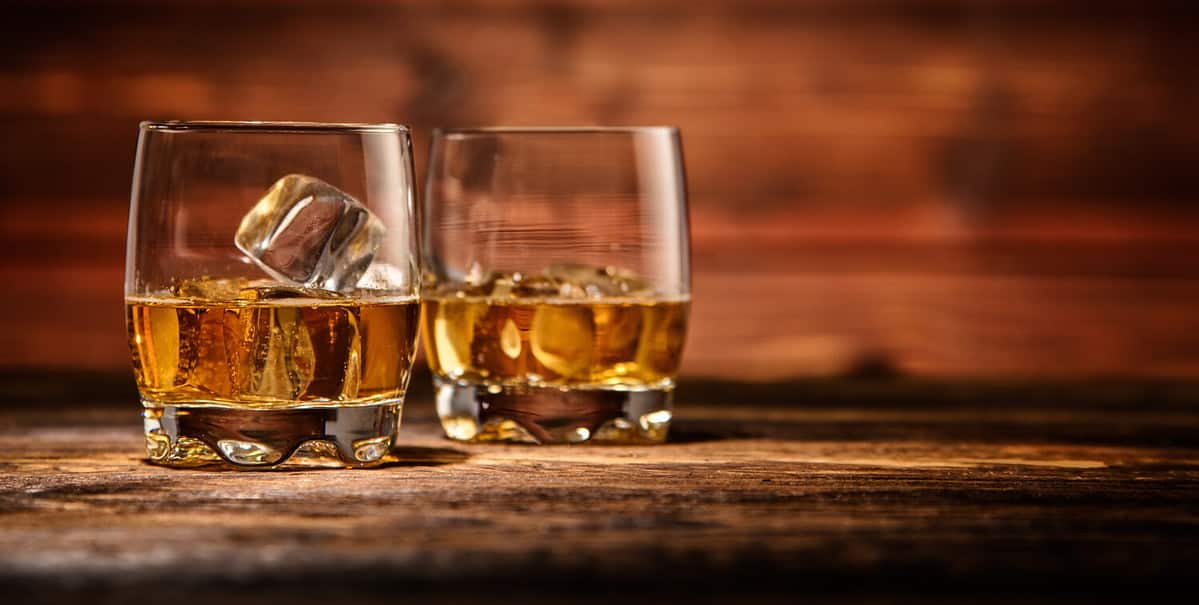
Whiskey is an all-encompassing term that covers a wide range of alcoholic spirits.
©Jag_cz/Shutterstock.com
Types of Whiskey
Whiskey is an all-encompassing name to describe many spirits. A few of these spirits include:
- Single Malt Whiskey
- Rye Whiskey
- Bourbon Whiskey
- Tennessee Whiskey
- Canadian Whiskey
- Welsh Whiskey
- Japanese Whiskey
Whiskey Cocktails
A Whiskey cocktail will combine the whiskey with a combination of different ingredients to produce unique flavors and interesting combinations. Below are some of the more popular whiskey cocktails:
- Old Fashioned
- Sazerac
- Rob Roy
- Whiskey Sour
- Whiskey Smash
- Manhattan Cocktail
- Irish Mule
- Gold Rush Cocktail
- Classic Irish Coffee
- New York Sour
Whiskey Flavor
The flavor of the whiskey depends on the style of the whiskey. However, mainly, whiskey will carry a woody or oaky flavor note. More flavor notes can include nuts, vanilla, caramel, fruit, and spices. Numerous whiskeys are also grainier than bourbon and carry a sharp bite.
Bourbon is Specifically Corn Mash
Bourbon is a type of whiskey. It is only made out of corn mash, and corn must make up at least 51 percent of the mash for it to be called bourbon.
The other 49 percent of the mash is usually malted barley or rye wheat.
Bourban production also comes with more specific rules to adhere to. First, the bourbon cannot be distilled higher than 160 proof. It cannot be higher than 125 proof when put into the barrel. Bourban also cannot have any additives; it needs to remain purely bourbon. Instead, the flavoring develops during the aging process.
When bourbon is ready for aging, it must be placed into new, charred oak barrels. Also, this spirit has to be aged for at least two years to be regarded as straight bourbon. If a bourbon has been aged for less than four years, there will need to be an age statement somewhere for the purchaser to see.
Bourbon is American Whiskey
Bourbon is an American whiskey; it cannot be made anywhere outside the United States. It is common to think that bourbon is only made in Kentucky, and while Kentucky is a very high producer of bourbon, it can be made anywhere in the United States.
Types of Bourbon
Like whiskey, there are several different types of bourbon. Below are some of the more popular variations:
- Standard Bourbon
- Wheat Bourbon
- Blended Bourbon
- Sour Mash
- High Malt
- High Rye
Bourbon Flavor
Bourbon can have several distinct tasting notes. These include caramel, vanilla oak, baking spices, pepper, and cocoa fruit.
Bourbon is a smooth spirit with a sweet undertone, even without additives. This spirit is softer and smoother than many other types of whiskey.
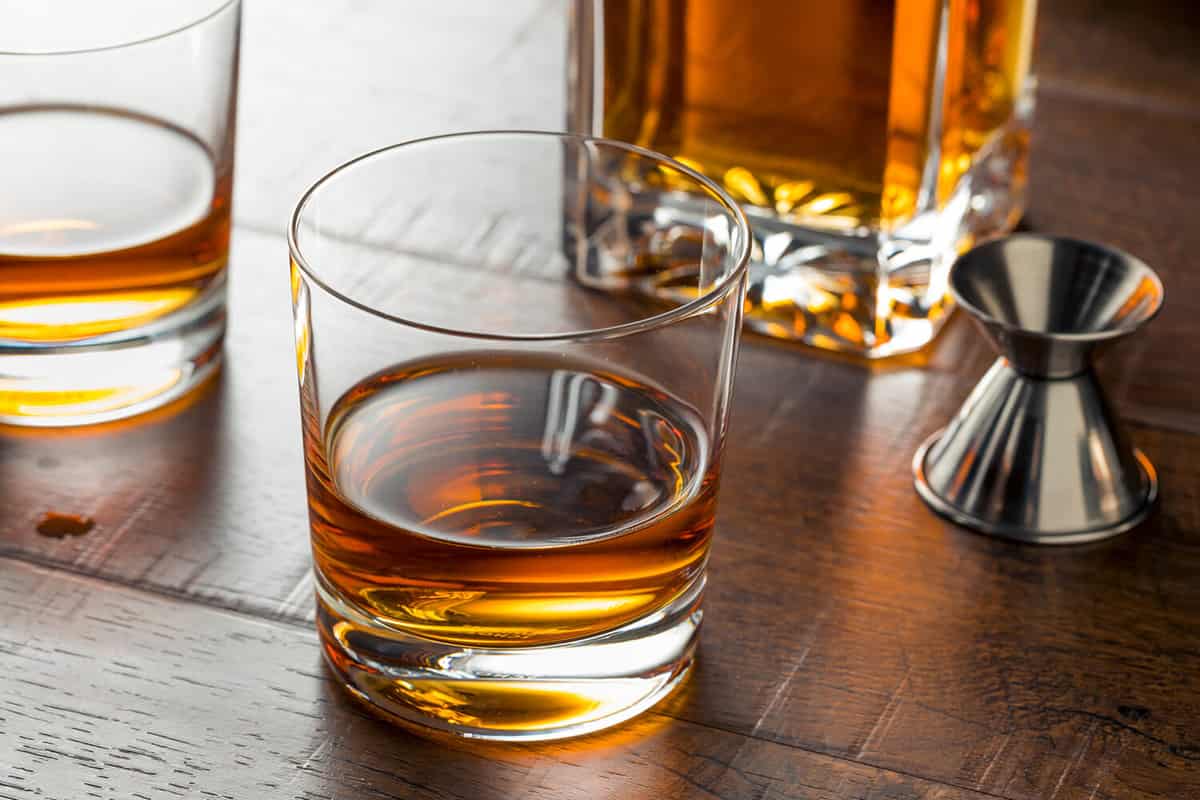
Bourbon is only made out of fermented corn mash. Many people believe that it is only produced in Kentucky. However, bourbon can be made anywhere in the United States.
©Brent Hofacker/Shutterstock.com
What are the Main Differences Between Scotch, Rye, and Bourbon?
There are several types of whiskies to enjoy. However, the popular ones include bourbon, scotch, and Rye whiskey. Let's take a look at what differences each one possesses.
Scotch Whiskey
Scotch whiskey is made of malted barley that has a smokey flavor. This specific whiskey is produced in Scotland. It has to be aged for at least three years. Additionally, the malted barley undergoes a different type of processing. During the barley malting process, the peat is burned. Often the smokey flavor comes from being dried over an open fire.
Scotch can have several different flavor notes, including smokey, vanilla, nutty, and even baked bread.
In addition, there are five different variations of scotch whiskey, these are:
- Blended Grain Scotch Whiskey
- Blended Malt Scotch Whiskey
- Single Grain Scotch Whiskey
- Single Malt Scotch Whiskey
- Blended Scotch Whiskey
Bourbon Whiskey
Bourbon Whiskey is made only in the United States. It is a corn mash that is distilled. The bourbon is placed into new oak barrels charred for aging. Furthermore, bourbon needs to be aged for at least two years.
Rye Whiskey
Rye whiskey is produced in several countries worldwide, including America, the United Kingdom, Germany, and the Netherlands.
It needs to have 51 percent rye grain to be a Rye whiskey. The other 49 percent is typically corn and barley. Additionally, Rye whiskey cannot go over 160 U.S. proof during distilling. It also needs to be aged in charred new oak barrels. Also, straight Rye whiskey needs a minimum aging process of two years.
History of Bourbon and Whiskey
The history of bourbon and whiskey is not all clear. However, it is a common understanding that whiskey has been used as medicine for a long time. The common medicinal uses of whiskey included internal and external antibiotics and an anesthetic. The distilling history of whiskey dates back to Ireland and Scotland. Where it is believed monks started the process around 1100 to 1300 A.D.
Bourbon is often thought of as primarily a Kentucky-made product, and while it is true its origins are traced back to Kentucky, the history is a little murky. One belief states that a Baptist minister, reverend Elijah Craig was the first to distill bourbon in the 18th century. Other beliefs claim that the Scottish Irish brought this method to Kentucky in the 18th century. Also, Bourbon County in Kentucky is commonly considered the birthplace of bourbon. However, some believe that Bourbon Street in New Orleans could also be the original home of bourbon.
The very early bourbon spirits did not go through the same aging process prevalent today. Instead, they were flavored with fruit and sugar. It was in the 1820s that the process of gaining bourbon was born.
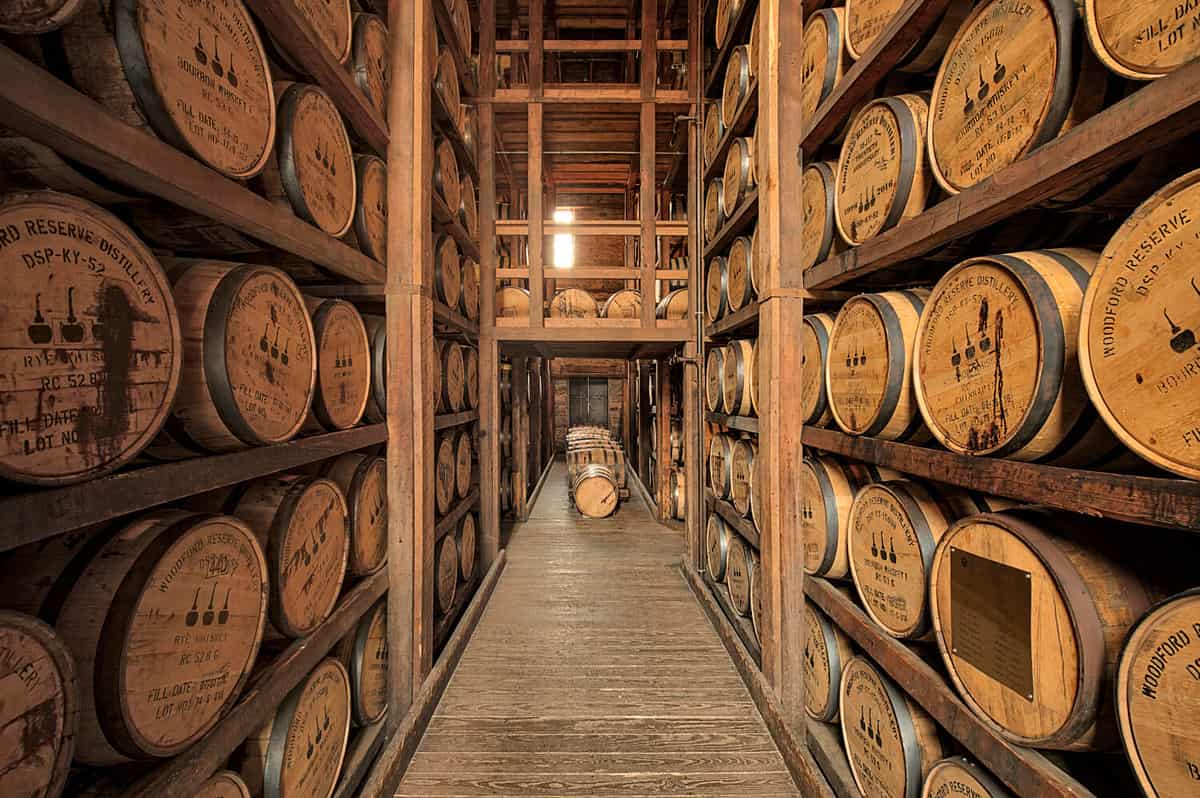
The new, charred oak barrels help give the whiskey and bourbon their distinct flavor notes.
©Danita Delimont/Shutterstock.com
One Last Note
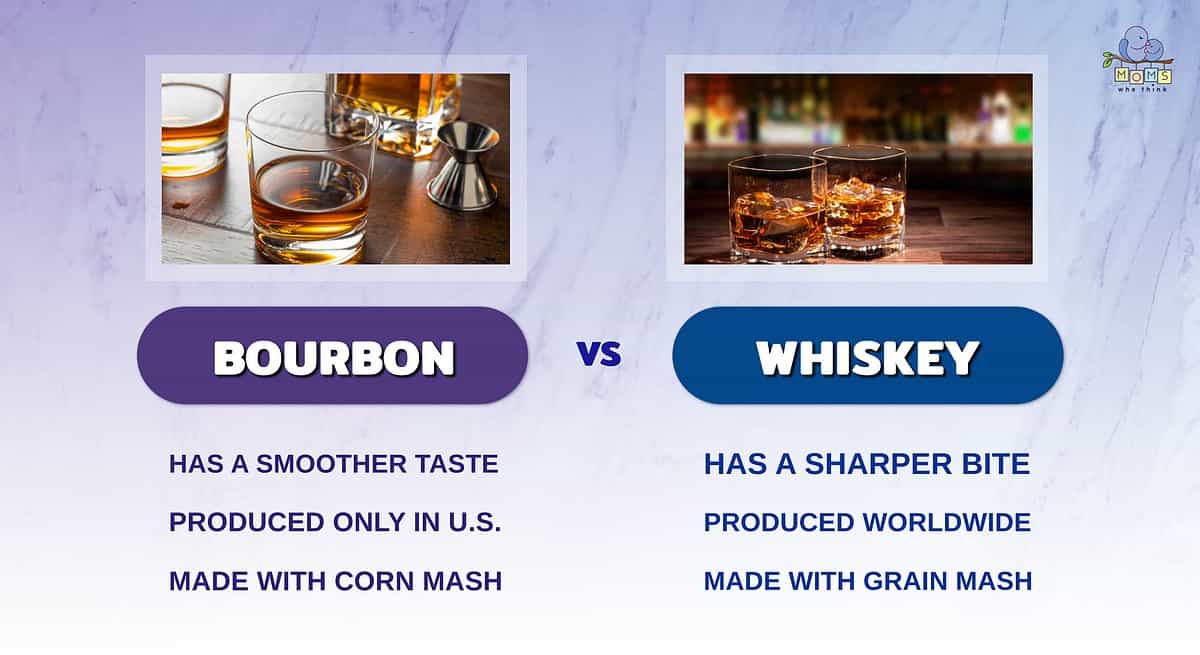
Whiskey and bourbon are two very popular drinks not only in the United States but throughout the world. While these spirits have many similarities, they also have a few differences. Let's take a look at some of those distinctions:
- Whiskey comes from fermented grain Mash which is mixed with water and yeast. Bourbon, on the other hand, is made out of corn mash as well as either malted barley or rye wheat.
- The flavors of these two spirits are particularly different. Bourbon has a smoother, more and taste; whiskey has a sharper bite to it.
- In terms of production, whiskey can be made anywhere in the world, who's Scotland is known to be the biggest producer. Bourbon cannot be made anywhere outside of the United States, and Kentucky is a particularly high producer of the spirit.
Bourbon and whiskey are fine and sharp spirits that give off an air of sophistication. However, just about anyone can enjoy either of these drinks. Whether you appreciate a variety of whiskies or want to opt for one specific one, like bourbon, either choice is excellent. Although these two spirits have many similarities, the differences between whiskey and bourbon set them apart and allow each one to shine in its own glory.
The image featured at the top of this post is ©Razoomanet/Shutterstock.com
